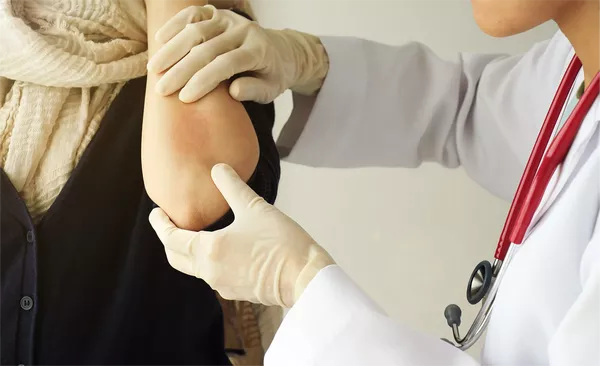Psoriasis is a complex and multifaceted skin condition that manifests in various forms, each with its unique set of symptoms, severity, and impact on individuals. When discussing the “worst” type of psoriasis, it’s important to understand that “worst” is a subjective term. For some, the worst type may be the one that causes the most physical discomfort, while for others, it might be the type that has the most significant impact on their quality of life. In this context, the “worst” forms of psoriasis are generally those with the most severe symptoms, potential complications, and overall impact on the body and daily life.
SEE ALSO: What is the Common Sense About Eyelid Psoriasis
Highlighting the Most Severe Forms
Pustular Psoriasis
Pustular psoriasis is one of the most severe forms of psoriasis. It is characterized by the development of white pustules (blisters of noninfectious pus) surrounded by red skin. This type can occur in localized areas, such as the hands and feet, or cover larger areas of the body. The pustules can cause intense pain and discomfort, and the affected skin may feel hot to the touch. Pustular psoriasis can also lead to systemic symptoms such as fever, chills, and fatigue, significantly impacting a person’s overall well-being. In severe cases, it can cause life-threatening complications, such as widespread infection or liver and kidney damage.
Erythrodermic Psoriasis
Erythrodermic psoriasis is another severe form that affects nearly the entire body with a red, peeling rash that can itch or burn intensely. This type of psoriasis is rare but can be life-threatening, as it disrupts the body’s ability to regulate temperature and perform its barrier function. The widespread inflammation and skin shedding can lead to complications such as dehydration, heart failure, and severe infection. Erythrodermic psoriasis often requires immediate medical attention and hospitalization to stabilize the patient’s condition and prevent life-threatening complications.
Psoriatic Arthritis
Psoriatic arthritis is a chronic condition that combines the skin symptoms of psoriasis with joint inflammation similar to arthritis. This form of psoriasis can cause severe pain, stiffness, and swelling in the joints, which can lead to significant joint damage if left untreated. Psoriatic arthritis can affect any joint in the body and, in some cases, can also cause inflammation in the eyes and digestive tract. The impact on daily life can be profound, as the pain and stiffness can make it difficult to perform everyday activities, leading to a decreased quality of life. In severe cases, psoriatic arthritis can lead to permanent joint damage and disability.
Addressing Potential Complications
Infections
One of the potential complications of severe psoriasis is an increased risk of infections. The skin is the body’s first line of defense against pathogens, and when it’s compromised by severe psoriasis, this barrier function is weakened. The open sores and cracks in the skin can become entry points for bacteria, leading to skin infections that can spread and become serious. In cases like erythrodermic psoriasis, where large areas of skin are affected, the risk of systemic infection increases, which can be life-threatening.
Heart Disease
Research has shown that individuals with severe psoriasis are at an increased risk of developing heart disease. The chronic inflammation associated with psoriasis is believed to contribute to the development of cardiovascular conditions such as atherosclerosis (hardening of the arteries) and myocardial infarction (heart attack). The systemic inflammation seen in severe forms like erythrodermic psoriasis can exacerbate these risks, making heart disease a significant concern for people with severe psoriasis.
Depression and Anxiety
The psychological impact of severe psoriasis cannot be underestimated. The visible nature of the condition, combined with the physical discomfort, can lead to feelings of self-consciousness, embarrassment, and social isolation. This, in turn, can contribute to the development of depression and anxiety. The chronic pain and fatigue associated with conditions like pustular psoriasis and psoriatic arthritis can further exacerbate these mental health challenges, creating a cycle of physical and emotional distress that can be difficult to break.
Conclusion
Understanding the “worst” aspects of psoriasis requires a holistic view that goes beyond just the physical symptoms. While the visible scaling, redness, and itching are the most immediate and recognizable signs of the disease, the worst part for many individuals may lie in the less visible impacts—such as the emotional distress, social stigma, and the relentless nature of a chronic illness that can wax and wane unpredictably. For some, the worst aspect is the effect on their self-esteem and mental health, as they navigate a world that often lacks understanding and empathy for those with visible skin conditions. For others, it’s the day-to-day management of symptoms, the trial and error with treatments, and the constant vigilance required to avoid triggers that may exacerbate the condition. The worst of psoriasis can also manifest in the financial and logistical burdens of ongoing medical care, including the cost of medications, doctor visits, and the time taken away from work or other activities. Ultimately, the worst aspect of psoriasis is deeply personal and varies from person to person, reflecting the unique ways in which this complex disease intersects with each individual’s life. By recognizing and addressing these varied challenges, healthcare providers can offer more empathetic, comprehensive care that truly meets the needs of those living with psoriasis. This approach not only aims to alleviate the physical symptoms but also seeks to improve the overall quality of life, addressing the broader psychosocial impacts that can be just as debilitating as the disease itself.
Related Topics:


























